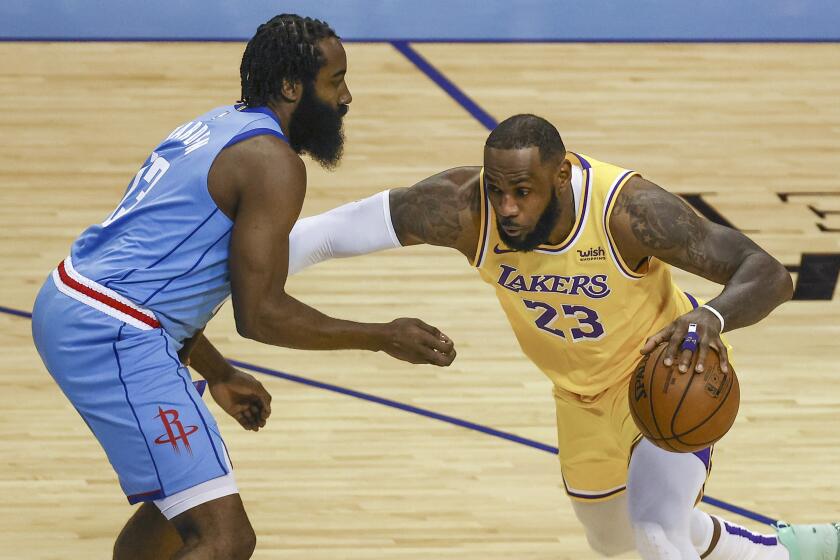Faded Elegance but No Ceremony at Moscow’s Hippodrome
- Share via
MOSCOW — Racing fans at Moscow’s once-elegant colonnaded hippodrome share the concerns of their counterparts at Churchill Downs, Longchamp or Ascot.
Can their long-considered choice handle mud, run that extra furlong or turn in a winning performance for a new jockey?
But there are plenty of differences about a day at the races in the Soviet capital.
Like the incongruous “Glory to Labor” sign still glaring at patrons from the infield despite the removal of such exhortations from city streets in Mikhail Gorbachev’s more down-to-earth Soviet Union.
Or the cracked painted ceilings with equine motif entwined with hammer and sickle, and the once-glorious chandeliers hanging above a mock atrium opposite the main betting windows in the grandstand.
Or even the fact that all the horses have one owner -- the state.
Seventy percent of the modest purses on offer for all but the most prestigious races goes to jockeys, trainers and other staff and the remainder is turned over to the breeder.
“There is nothing to stop you from training and entering your own horse,” course director Kazbek Dzalayev said in his office behind the curtained guest box.
“But this is not a simple undertaking and I’ll bet you wouldn’t make any money doing it.”
Sunday afternoon punters can try their luck in 15 races -- a mixture of trotting and flat racing on two adjacent dirt tracks.
The best known breeds, according to the Soviet Encyclopedia, are the Orlov trotters from south of Moscow, Moscow trotters, and thoroughbreds from the south of Russia.
Wagering, all electronic, is easily mastered by the uninitiated -- there is betting to win and a series of combination tickets are available.
The minimum bet is equal to 80 cents with no more than $5 allowed per transaction, though you can buy as many tickets as you wish.
Unlike Western fans, able to consult detailed form charts, Moscow bettors must rely on a program with the most basic of information.
“System, what system?” said a middle-aged bettor sprouting a day-old beard. “You have to use your head.”
Most racegoers appeared to be from modest backgrounds and few women were in attendance. A handful of children were given rides in a cart pulled by a handsome roan stallion.
“Don’t be misled, race courses everywhere are a mirror reflecting society and ours is no exception,” said director Dzalayev. “On big days, we have plenty of dignitaries here, artists, actors, writers.”
The Moscow track dispenses with formalities common to Western courses.
The paddock, which normally affords a close look at the horses for the discerning bettor, is off limits. A stern-looking elderly woman warns the curious away at a gate some 50 yards away.
No trumpet informs fans of the post parade -- the horses come past the grandstand willy-nilly, unannounced.
And there is no winner’s enclosure where horse and jockey can enjoy their moment of triumph -- the whole field is hustled back to the stable immediately after the race.
Treats are basic for the family enjoying an afternoon’s outing. Catering is limited to the sausage on bread or barbecue kebabs on sale at all Soviet sporting events.
A door marked “restaurant” stands padlocked and dusty.
“We are trying very hard to attract families and we know our facilities are lacking,” Dzalayev said. “Nothing has been done to this building since it was built more than 40 years ago. In the next two years we will be making major repairs and money will be spent on it.”
More to Read
Go beyond the scoreboard
Get the latest on L.A.'s teams in the daily Sports Report newsletter.
You may occasionally receive promotional content from the Los Angeles Times.










